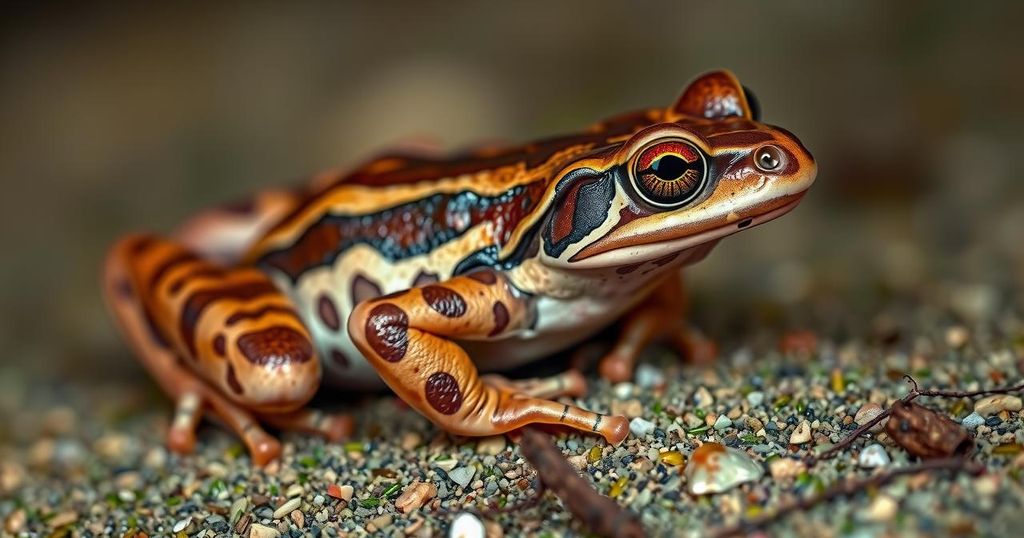The Helmeted Water Toad, an ancient species native to Chile, is endangered due to climate change and human impact. Its population has diminished by over 30 percent since 1990, and it is classified as “vulnerable” by the IUCN. Experts stress the need for conservation efforts to protect this unique amphibian from declining further due to habitat loss and pollution.
A large frog species known as the Helmeted Water Toad, which has existed for millions of years alongside dinosaurs, is currently facing significant threats due to climate change and human activities in its native Chile. This remarkable amphibian can grow over 30 centimeters and weigh up to one kilogram, retaining its genetic characteristics for millennia. However, researchers have reported a concerning decline in its population, with estimates suggesting a decrease of over 30 percent since 1990. Currently designated as “vulnerable” by the International Union for Conservation of Nature (IUCN), the Helmeted Water Toad’s habitat is being compromised by environmental degradation, pollution, and poor water management practices.
Melissa Cancino, an animal doctor and founder of Proyecto Anfibia, a research organization focused on amphibians in Chile, expressed her dismay at the situation: “It is sad that a species that managed to coexist with dinosaurs, that managed to resist a mass extinction, is now threatened by human beings.” Additionally, Matias Faundez, also from Proyecto Anfibia, highlighted the severe pollution affecting the frog’s habitat, stating, “This estuary runs through the whole city, and has plenty of illegal run-offs. Even so, the frog manages to survive.” The struggle of the Helmeted Water Toad serves as a stark reminder of the impact of human actions on ancient species.
The Helmeted Water Toad is notable for its long evolutionary history, having survived drastic changes in Earth’s climate and environments over millions of years. It is classified as a large amphibian, which in ecological terms, is crucial for the health of its ecosystem due to its dual life stages. However, as human activities intensify and climate change progresses, the natural habitats of many species—including this frog—are becoming increasingly vulnerable, prompting urgent research and conservation efforts. Understanding the plight of the Helmeted Water Toad provides insight into broader environmental issues affecting biodiversity and ecosystem stability.
In conclusion, the Helmeted Water Toad, a prehistoric amphibian, is threatened by modern challenges such as climate change and habitat destruction. Significant population declines urge immediate action to protect this species and its environment. The insights provided by experts from Proyecto Anfibia emphasize the need for comprehensive environmental strategies to mitigate damage and secure the future of this remarkable creature, reminding us of the impact of our actions on biodiversity.
Original Source: learningenglish.voanews.com






